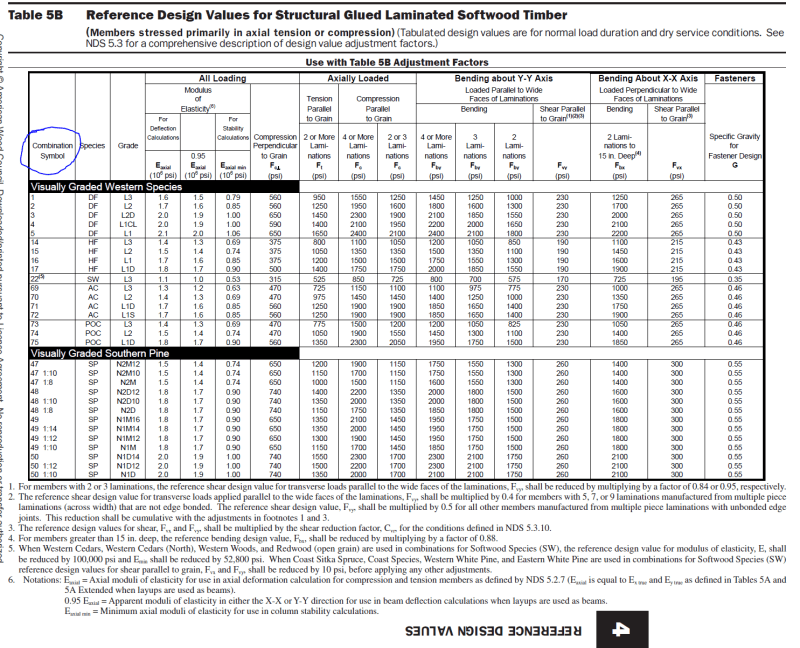JeffCastillo
Structural
Hello:
I am in the process of creating a Glulam Column Spreadsheet, and I am trying to follow an example in the Design of Wood Structure 8th Edition (by Breyer), but I never quite understood what they mean by Axial Combination 2 DF Glulam. I am just trying to create an axial loaded spreadsheet and will do the combined axial and bending after, but I don't understand that part if anyone can clarify?
I am in the process of creating a Glulam Column Spreadsheet, and I am trying to follow an example in the Design of Wood Structure 8th Edition (by Breyer), but I never quite understood what they mean by Axial Combination 2 DF Glulam. I am just trying to create an axial loaded spreadsheet and will do the combined axial and bending after, but I don't understand that part if anyone can clarify?

